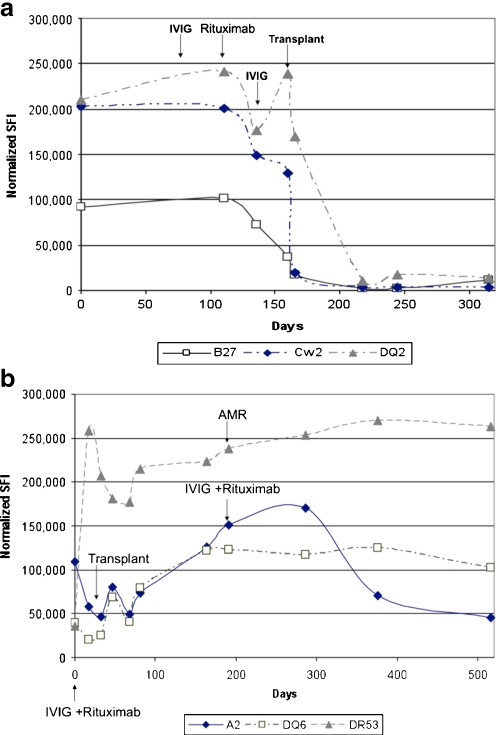Fig. 1.
a Donor-specific antibody (DSA) pattern for a highly human leukocyte antigen (HLA)-sensitized patient who had awaited deceased-donor (DD) transplantation for >10 years. The patient was treated with intravenously administered immunoglobulin (IVIG) + rituximab as per protocol and received a DD transplantation shortly after completing desensitization. DSA levels rapidly decreased from >200,000 standard fluorescent intensity (SFI) units to unmeasurable. At the time of writing this article, the patient was >1 year posttransplant without antibody-mediated rejection (AMR), with a serum creatinine (Cr) 0.8 mg/dl. b DSA pattern from a patient who received a living-donor (LD) kidney transplant approximately 2 years ago. The patient exhibited DSAs to A2, DR53, and DQ6. After desensitization, good responses were seen, which allowed transplantation. Approximately 3 months posttransplant, the patient experienced AMR, with an increase in DSAs. These responded somewhat to IVIG + rituximab treatment. Serum Cr was stable at 1.4 mg/dl for 2 years, and no proteinuria has been observed

